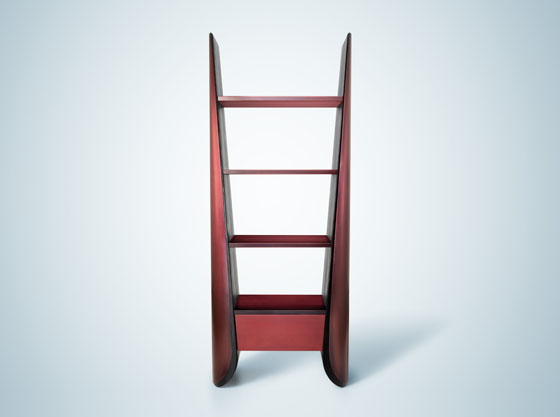Tracing Identity: De Castelli
Brand story by Bethan Ryder
Crocetta del Montello (TV), Italie
30.03.17
Seven female designers throw new light on that most ancient of materials, metal, in a unique collaboration with modern-day alchemists DE CASTELLI – to be launched at this year's Salone del Mobile.
Italian designer Elena Salmistraro’s Polifemo cabinet was inspired by the one-eyed Cyclops of Greek mythology. The timber structure is covered in copper engraved with a chevron pattern and the handles masquerading as the central eye

Italian designer Elena Salmistraro’s Polifemo cabinet was inspired by the one-eyed Cyclops of Greek mythology. The timber structure is covered in copper engraved with a chevron pattern and the handles masquerading as the central eye
×It may only be 14 years old but the Italian brand De Castelli is already regarded as one of Europe’s leading manufacturers of metallic surfaces, known for its innovative finishes and pioneering techniques. Company founder Albino Celato has swiftly forged this reputation by harnessing the talents of external architects and designers, recognising that it often requires an external viewpoint to fully recognise the potential of one’s own expertise. Xavier Lust, Michele de Lucchi and Aldo Cibic are just some of the established names who have created products with De Castelli, exploring the vast spectrum of possibilities in a variety of metals.
As a group the Scribble series of coffee tables by Francesca Lanzavecchia exhibit the varied palette made possible by exposing copper to different oxidations. Like paint strokes they have playful names such as Dot, Comma, Accent and Bracket
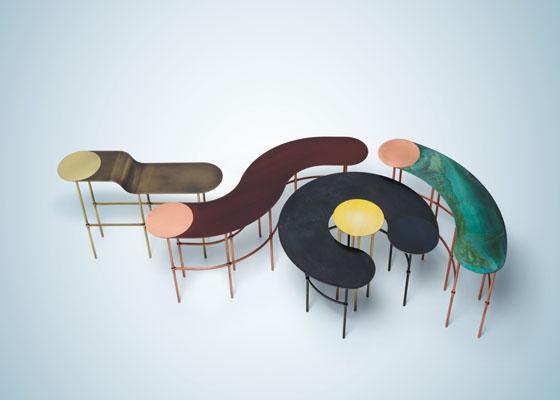
As a group the Scribble series of coffee tables by Francesca Lanzavecchia exhibit the varied palette made possible by exposing copper to different oxidations. Like paint strokes they have playful names such as Dot, Comma, Accent and Bracket
×Until now these collaborations have predominantly been with male designers, but last year – with gender a hot global news topic – Celato decided to throw open De Castelli’s doors to seven female designers, asking each of them to conceive one piece that would “express the rich potential of metal”, in particular the many techniques and treatments at which the company excels. The designers hail variously from Italy, France, Belgium and Slovenia, and were selected for “their interpretive skills and emotional, empathic and narrative style”.
Donata Paruccini’s Vomere table is designed to “express lightness and freedom from formal schemes”. The rounded structural elements and orbital délabré copper top lend a softness to this Meccano-like metal piece
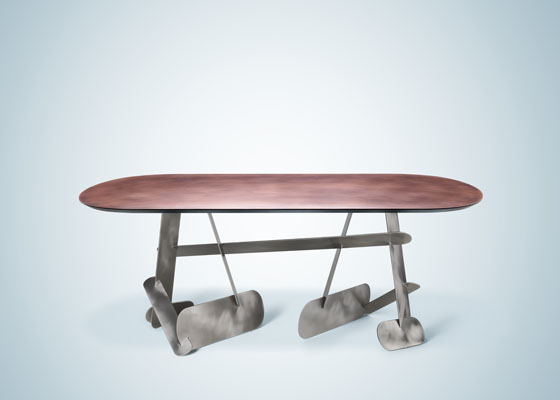
Donata Paruccini’s Vomere table is designed to “express lightness and freedom from formal schemes”. The rounded structural elements and orbital délabré copper top lend a softness to this Meccano-like metal piece
×Would the chosen seven manage to throw new light on this ancient material, which De Castelli is able to alter in myriad ways, applying alchemies from oxidisation and acid-etching to brushing and burnishing? The resulting collection, Tracing Identities, which launches at this year’s Salone del Mobile, reveals a diverse design language. There is the evocative and expressive, in the form of Nika Zupanc’s Longing Cabinet and Alessandra Baldereschi’s Painting Collection of screens that feature abstract landscapes in chromatic shades of steel, copper, brass and iron. Taking a playful approach is Francesca Lanzavecchia with her Scribble tables, Elena Salmistraro with the Cyclops-inspired Polifemo cabinet and Donata Paruccini and her Meccano-like Vomere table. Meanwhile Nathalie Dewez’s delicate Elizabeth Cabinet and Constance Guisset’s Volte shelving contribute a quieter elegance.
Volte (top) by French designer Constance Guisset features a timber structure wrapped in délabré copper. Nathalie Dewez’s polished copper Elizabeth cabinet (above) with its plissé facade demonstrates De Castelli’s incredible bending techniques

Volte (top) by French designer Constance Guisset features a timber structure wrapped in délabré copper. Nathalie Dewez’s polished copper Elizabeth cabinet (above) with its plissé facade demonstrates De Castelli’s incredible bending techniques
×One thing all seven share is a love of copper. It’s the preferred metal throughout the collection. “Brass has had its golden years. I think it’s the warmth and rich potential of copper that appeals,” says Nathalie Dewez, whose polished copper cabinet features a delicately folded facade. Already a confident designer in metal, Dewez had the prototype for the Elizabeth cabinet in her Brussels-based studio, but was yet to find a manufacturer with the know-how to produce the fine plissé effect. “When I visited the factory, I asked if it was possible to fold metal that finely. De Castelli said ‘Anything is possible.’ They were ready to try anything,” she recalls. “It’s folded by hand. Copper is notoriously difficult to work with, but the results mean we now know it’s probably possible to apply the same technique to any metal.”
Fellow designer Nika Zupanc takes a more conceptual approach. Her “cabinet of wishes” is a nostalgic nod to kitchen credenzas with locked storage – keys being a recurring motif in her work. “It’s something I remember from fairy tales. Cookies or food would be stored away out of children’s reach and the mother would wear the key around her neck,” she recalls. “It’s not just functional, but speaks on another level about desire and longing.”
Nika Zupanc’s “cabinet of wishes” showcases three copper finishes in across its collection of square compartments, which each come with a glossy copper key - a recurring motif in Zupanc’s work
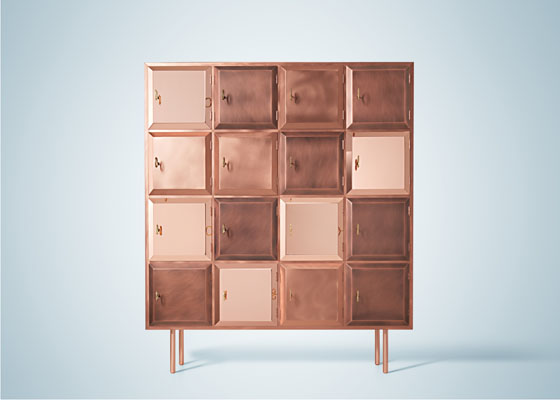
Nika Zupanc’s “cabinet of wishes” showcases three copper finishes in across its collection of square compartments, which each come with a glossy copper key - a recurring motif in Zupanc’s work
×As with the rest of the collection, Zupanc’s piece expresses a fascination with finishes as much as a desire to make a particular design statement. Her aim was to demonstrate the beauty of utilising several metal finishes on one piece. Her timber-framed Longing Cabinet is clad in thin metal copper sheets in three finishes délabré, glossy and satin with the legs and keys cast in brass with a glossy copper finish. “There are so many beautiful colours made possible by different oxidisations,” she explains. “I suggested several palettes, but we decided on a series of pinks. So it’s in copper, but this cabinet could work in gold or even silver.”
Délabré black iron, polished steel, brushed copper and délabré brass combine to create these extraordinary landscapes on screens by Alessandra Baldereschi which serve to demonstrate the chromatic shades made possible by oxidation
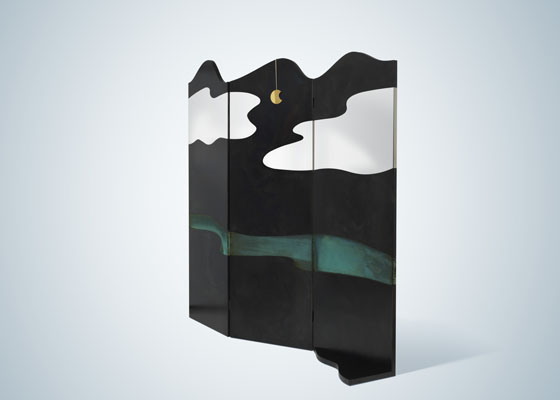
Délabré black iron, polished steel, brushed copper and délabré brass combine to create these extraordinary landscapes on screens by Alessandra Baldereschi which serve to demonstrate the chromatic shades made possible by oxidation
×On the surface, De Castelli’s Tracing Identities appears to showcase a wealth of current design talent, but its power is two-fold. Look again at its diverse, multi-tonal applications of metal and this collection reveals the vast creative potential of this noble material in contemporary design.
© Architonic




